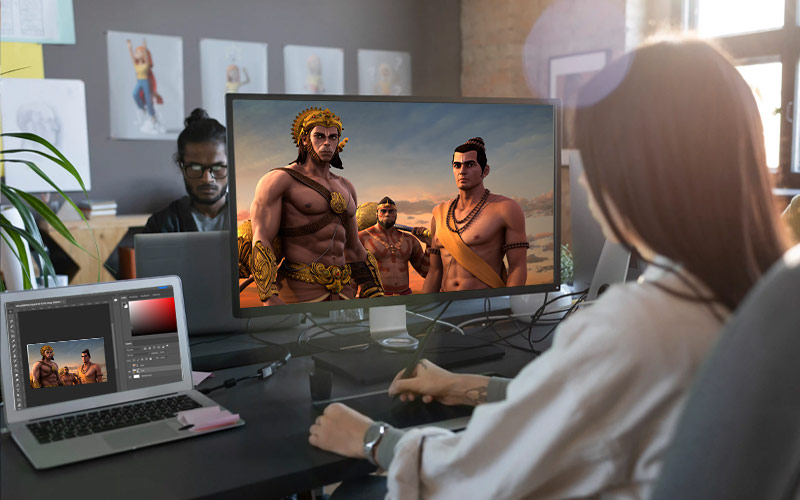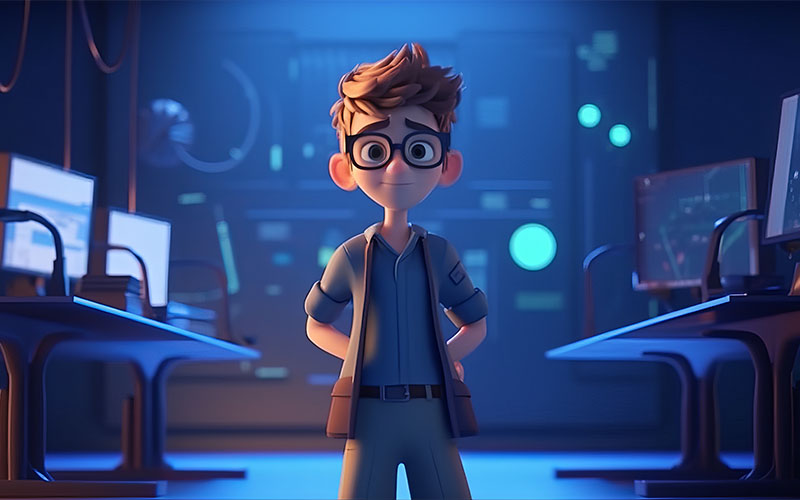Animation has captivated audiences for decades, bringing imagination to life and creating memorable characters and stories. “Animation is not the art of drawings that move but the art of movements that are drawn.” – Norman McLaren. If you have a passion for breathing life into art, pursuing a career in animation might be the perfect choice for you. Get ready to explore the best animation colleges and gain insight into animation course details that can shape your path to a fulfilling and creative career.
In this blog, we will explore the animation course details and delve into the 5 major points that form the backbone of this art form.
What are the 5 major points of animation?
The 5 major points of animation, often referred to as the 12 principles of animation, were originally developed by animators at Walt Disney Studios in the 1930s. These principles are fundamental guidelines that help create the illusion of life and movement in animated characters. Here are the 5 major points:
- Squash and Stretch: This principle emphasizes the flexibility and elasticity of objects or characters. It involves distorting shapes to show the impact of forces like gravity or weight, giving a sense of volume and energy.
- Anticipation: Anticipation is used to prepare the audience for an action or movement. It involves creating a brief, subtle action before the main movement, signaling what is about to happen and making it more believable.
- Staging: Staging refers to the presentation of an idea, action, or character in a clear and visually understandable way. It involves using composition, timing, and camera angles to guide the viewer’s attention and convey the intended message effectively.
- Straight Ahead Action and Pose-to-Pose: These are two different approaches to creating animation. Straight Ahead Action involves starting at the first frame and drawing each successive frame in sequence, allowing for spontaneity and creating a fluid, organic movement. Pose-to-Pose, on the other hand, involves creating keyframes at important poses or moments and then filling in the gaps with additional frames, giving more control over the overall animation.
- Follow Through and Overlapping Action: Follow Through refers to the concept that different parts of a character or object may continue moving after the main movement has stopped, creating a more realistic motion. Overlapping Action refers to the idea that different parts of a character may move at different rates or times, adding depth and complexity to the animation.
These principles, along with additional principles such as Slow In and Slow Out, Arcs, Timing, Exaggeration, Solid Drawing, Secondary Action, and Appeal, form the complete set of 12 principles of animation. They continue to be widely used and studied by animators to this day.
What is the scope of animation after completing animation from a reputed animation college?
The scope of animation after completing a program from the best animation colleges can be quite broad and diverse. Here are some potential avenues and career opportunities within the field of animation:
- Feature Films and Animated Movies: Animation plays a crucial role in the creation of feature films and animated movies. Working on animated films allows animators to bring characters and stories to life through various techniques like 2D animation, 3D computer animation, stop-motion, or a combination of these.
- Television and Streaming Content: The demand for animated content on television and streaming platforms has been consistently increasing. Animators can find opportunities in creating animated series, commercials, promotional content, or even short-form animated videos for social media platforms.
- Video Games: The gaming industry relies heavily on animation for character design, movement, cutscenes, and overall visual appeal. Animators can work on developing game characters, environments, and animations that enhance the gaming experience.
- Advertising and Marketing: Animation is frequently used in advertising and marketing campaigns to create engaging and visually captivating content. Animators can work on creating animated commercials, explainer videos, motion graphics, and other visual elements for promotional purposes.
- Visual Effects (VFX): The field of visual effects encompasses a wide range of applications, including films, television, commercials, and even virtual reality experiences. Animators can specialize in VFX and contribute to the creation of stunning visual sequences, such as character animation, creature effects, simulations, and compositing.
- Augmented Reality (AR) and Virtual Reality (VR): With the rise of AR and VR technologies, animators can explore opportunities in creating immersive and interactive experiences. This includes designing and animating characters, environments, and objects that users can interact with in virtual or augmented worlds.
- Freelancing and Entrepreneurship: Many animators choose to work independently as freelancers, taking on projects from various clients and industries. Additionally, some animators may establish their own animation studios or production companies to create original content or provide animation services to clients.
It’s important to note that the scope of animation is constantly evolving, with emerging technologies and new platforms opening up opportunities for creative expression. By keeping up with industry trends, building a strong portfolio, networking, and continuously improving their skills, animators can enhance their prospects and find success in the field of animation.
How does George Animatrix in Kolkata help students to stand to brag about best placements in animation?
When it comes to one of the best animation colleges in Kolkata then George Animatrix tops the list. It offers placement assistance services, including job placement support, resume building, interview preparation, and career counseling. They organize recruitment drives, industry interactions, or alumni networking events to connect students with potential employers. However, the success of placements depends on individual efforts, dedication, and the overall job market conditions.
Conclusion
Animation is a remarkable art form that breathes life into creativity and captivates audiences worldwide. In this blog, we have delved into the 5 major points of animation, uncovering the principles that bring characters and stories to life. From squash and stretch to follow through and overlapping action, each principle plays a vital role in creating the illusion of movement and adding depth to animations.



